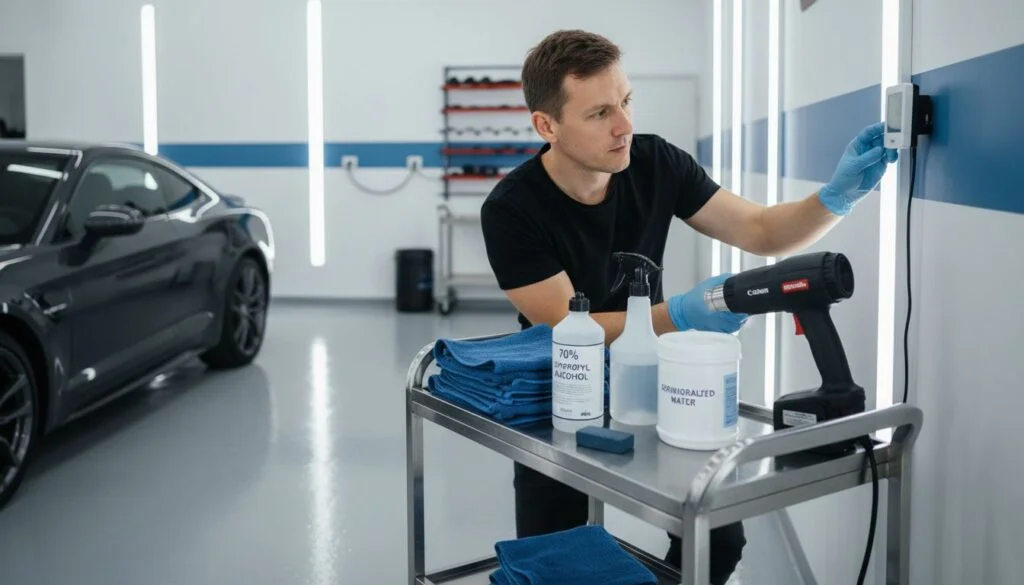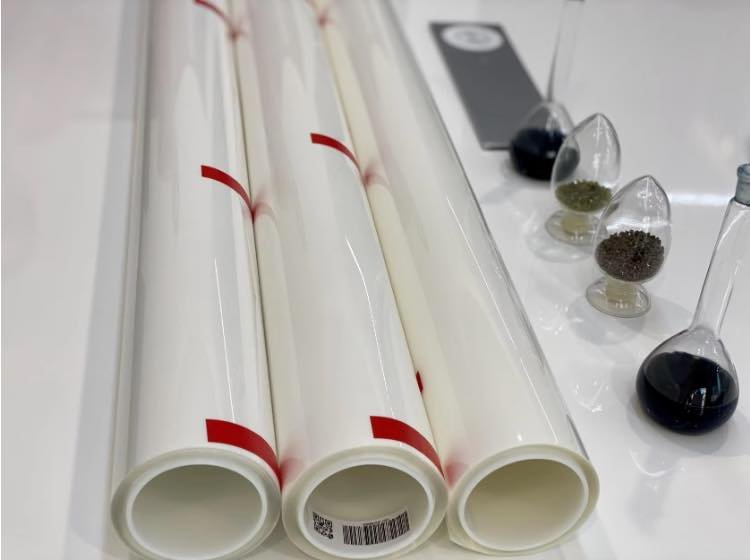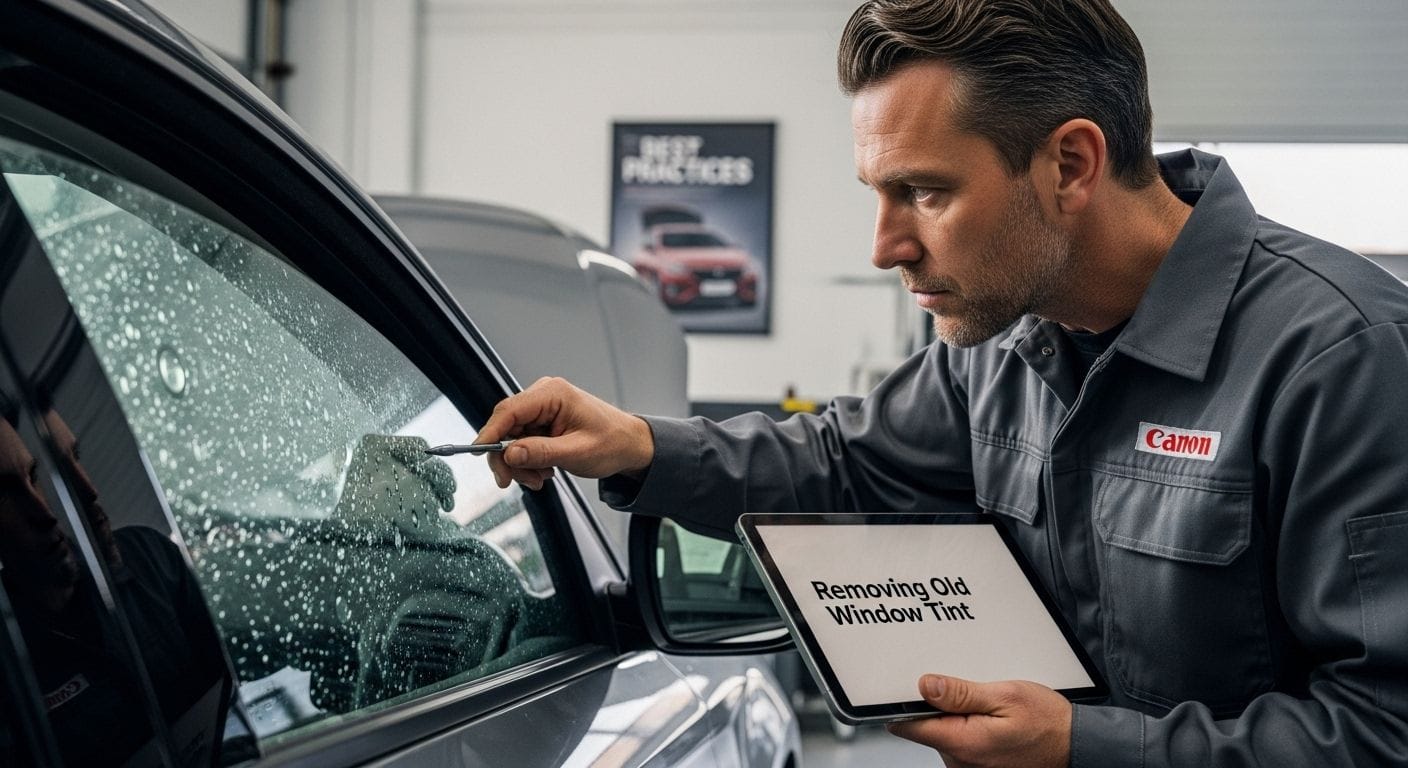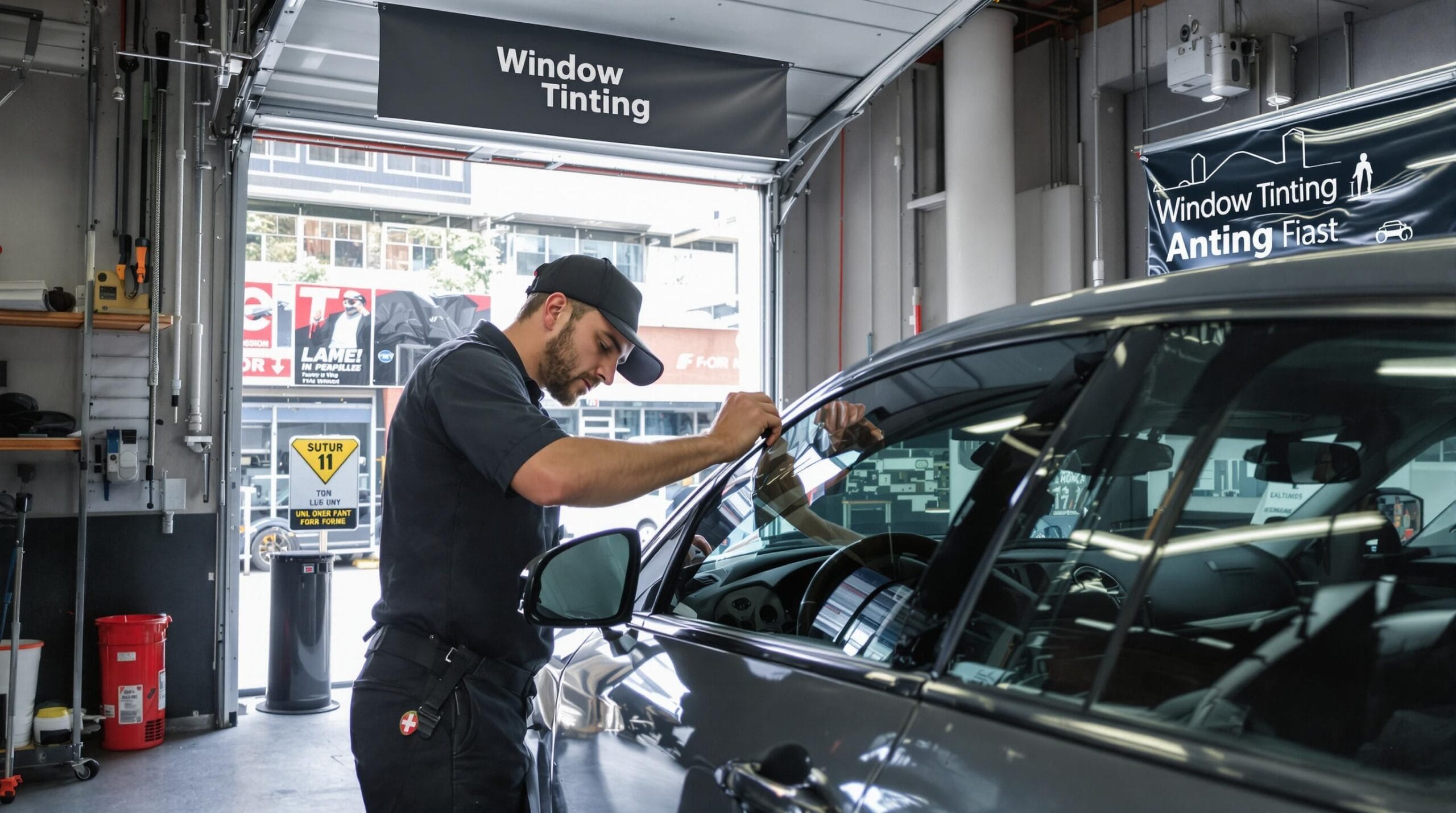
Most car enthusiasts agree that a flawless paint finish is worth the extra effort. Still, even the best paint jobs face threats from chips, stains, and harsh weather. Industry experts say that proper paint protection film maintenance can extend your vehicle’s showroom look for years. Whether you just installed PPF or want to refresh your routine, knowing the right steps protects both your investment and your car’s glossy shine.
Table of Contents
- Step 1: Prepare Your Workspace and Materials
- Step 2: Inspect PPF Surface for Contaminants
- Step 3: Clean Exterior Without Damaging PPF
- Step 4: Apply Detailing Products Suitable for PPF
- Step 5: Verify Finish and Address Any Issues
Quick Summary
| Key Point | Explanation |
|---|---|
| 1. Prepare Workspace Properly | Create a clean, dust-free area with essential tools for successful PPF installation. |
| 2. Inspect for Contaminants Regularly | Check for discoloration, bubbling, or peeling to prevent long-term damage to the PPF. |
| 3. Clean PPF Gently and Correctly | Use appropriate shampoos and avoid waxes or abrasive cleaners that could harm the film. |
| 4. Use Suitable Detailing Products | Opt for ceramic coatings specifically designed for PPF to maintain protection and appearance. |
| 5. Conduct Regular Finish Verifications | Inspect the PPF weekly to address issues promptly and prolong the life of the film. |
Step 1: Prepare Your Workspace and Materials
Preparing your workspace and materials is the critical foundation for a successful paint protection film (PPF) installation. Getting this first step right will save you time, prevent mistakes, and ensure a flawless final result.
According to FlexiShieldEU, you will need several essential materials to get started. Your toolkit should include:
- 70% concentration isopropyl alcohol
- Clean microfiber towels
- Clay bar
- Spray bottle
- Demineralized water
- Heat gun or torch
Choose a clean, well-ventilated workspace with consistent temperature and minimal dust. A garage or professional detailing area works best. Cover your work surface with a clean, lint-free cloth to prevent contamination. Prepare multiple lint-free microfiber towels and ensure your materials are within easy reach.
Pro Tip: Temperature matters. Aim for a workspace between 20-25 degrees Celsius (68-77 degrees Fahrenheit) for optimal PPF application conditions.
By meticulously preparing your workspace and gathering all necessary materials, you will set yourself up for a smooth and professional PPF installation process. Your next step will involve thoroughly cleaning and preparing the vehicle surface.
Step 2: Inspect PPF Surface for Contaminants
Detecting and addressing surface contaminants is a crucial step in maintaining the pristine appearance and protective qualities of your paint protection film (PPF). A meticulous inspection will help you catch potential issues before they become significant problems.
According to High Def Detailing, focus your inspection on high-impact areas and look for specific signs of wear or damage. Key indicators to watch for include discoloration, bubbling, or peeling edges. Use a soft microfiber cloth to gently wipe away dust and grime during your examination.
Building on insights from Keizin, you will want to identify both above surface and below surface contaminants. Above surface contaminants like tree sap and bug splatter can be removed with a clay bar, while below surface defects such as scratches and swirl marks might require compound treatment.
Pro Tip: Always inspect your PPF in good natural light or under bright, even lighting to catch subtle imperfections that might be missed in dim conditions.
Remember that early detection of contaminants can prevent long term damage and maintain the film’s protective qualities.
 Your next step will involve carefully cleaning the surface to prepare for more detailed treatment.
Your next step will involve carefully cleaning the surface to prepare for more detailed treatment.
Step 3: Clean Exterior Without Damaging PPF
Cleaning your vehicle with paint protection film requires a delicate touch and specialized approach to maintain its pristine appearance and protective qualities. Your goal is to remove dirt and grime without compromising the film’s integrity or causing unnecessary wear.
According to 3M Multimedia, you should use commercial shampoos specifically designed for PPF and strictly avoid cleaning agents that are strongly alkaline, acidic, or alcohol based. The company warns against using waxes containing dyes, abrasive polishes, or rubbing compounds that could potentially damage the film’s surface.
Building on recommendations from Detailing Devils, completely avoid automated car washes with rotating brushes that can scratch or tear the protective film. Instead, opt for hand washing or gentle foam washing techniques. Use high quality microfiber towels for drying and always work in a shaded area to prevent water spots and potential heat damage.
Pro Tip: Always use two separate microfiber towels during cleaning one for washing and a completely clean one for drying to prevent cross contamination.
By following these careful cleaning techniques, you will preserve your paint protection film and maintain your vehicle’s showroom finish.
Your next step involves carefully inspecting the surface after cleaning to ensure no new imperfections have appeared.
Step 4: Apply Detailing Products Suitable for PPF
Selecting and applying the right detailing products is critical to maintaining the longevity and appearance of your paint protection film. Your goal is to enhance protection without causing damage or compromising the film’s performance.
According to WRI Supply, you should strictly avoid waxes containing dyes, abrasive polishes, or rubbing compounds. Instead, opt for specialized products like ceramic coatings designed specifically for PPF. The recommended approach includes using 3M™ Ceramic Coating or 3M™ Ceramic Boost Spray to add hydrophobic properties and improve stain resistance.
Building on insights from Metamark, automotive ceramic foam and ceramic coating products can provide excellent protection. These specialized products offer multiple benefits including hydrophobic protection, enhanced gloss, and UV resistance. When applying, ensure you follow the manufacturer’s specific instructions for optimal results.
Pro Tip: Always perform a small patch test with any new product on an inconspicuous area before full application to ensure compatibility with your PPF.
By carefully selecting and applying the right detailing products, you will maintain the film’s protective qualities and keep your vehicle looking pristine. Your next step involves understanding how to maintain these protective coatings over time.
Step 5: Verify Finish and Address Any Issues
Verifying the final finish of your paint protection film is a crucial step that ensures your vehicle maintains its pristine appearance and protective qualities. Your goal is to conduct a thorough inspection that catches any potential issues before they become significant problems.
According to High Def Detailing, you should focus on weekly inspections of high impact areas. Look closely for signs of potential damage such as discoloration, bubbling, or peeling edges. Use a soft microfiber cloth to gently wipe away any dust or grime during your examination, which will help you spot subtle imperfections that might otherwise go unnoticed.
Building on recommendations from Superficial Details, implement a comprehensive maintenance strategy that includes bi-weekly detailed inspections. Pay special attention to panel edges and use specific hand washing techniques to preserve the film’s quality. Consider applying a quick detail spray or sealant periodically to maintain optimal protection and appearance.
Pro Tip: Always inspect your PPF in bright, natural light or under consistent lighting conditions to ensure you can detect even the smallest irregularities.
By meticulously verifying the finish and proactively addressing any emerging issues, you will significantly extend the life and performance of your paint protection film. Your ongoing maintenance routine will keep your vehicle looking showroom fresh and well protected.
Elevate Your PPF Car Detailing with Precision Cutting Solutions
Achieving flawless car detailing after PPF installation demands exact preparation, careful inspection, and masterful application. The pain points of avoiding contamination, ensuring perfect film fit, and using the right products highlight the importance of precision every step of the way. If you want to minimise material waste and speed up installation while maintaining showroom-quality protection, choosing the right pre-cut patterns is vital.
Discover how AEONCUT PPF Pre-cut Cutting software offers the cutting-edge advantage you need to match your meticulous cleaning and maintenance routines.

Streamline your workflow with our vast library of accurate PPF precut patterns designed for both professionals and enthusiasts. Start protecting your client’s vehicles with confidence today. Don’t let imperfect cuts undermine your hard work – visit https://aeoncutsw.com now and transform your approach to paint protection film installation.
Frequently Asked Questions
How do I effectively clean my vehicle after installing PPF?
To clean your vehicle after applying paint protection film (PPF), use a shampoo specifically formulated for PPF. Hand wash the vehicle in a shaded area and use high-quality microfiber towels to avoid scratching the film.
What should I look for during a PPF inspection?
During a PPF inspection, focus on high-impact areas where signs of wear may appear, such as discoloration, bubbling, or peeling edges. Use a soft microfiber cloth to gently wipe the area before checking for imperfections.
Can I apply ceramic coatings on top of PPF?
Yes, you can apply ceramic coatings designed for PPF to enhance protection and appearance. Ensure to follow the application instructions and conduct a patch test in a hidden area to confirm compatibility.
How often should I inspect my PPF for damage?
Inspect your paint protection film every week, focusing on high-impact areas, and perform detailed inspections bi-weekly.
![]() By doing this, you can catch small issues early and extend the lifespan of the film.
By doing this, you can catch small issues early and extend the lifespan of the film.
What type of detailing products are safe for PPF?
Use detailing products specifically labeled safe for paint protection film, avoiding waxes, dyes, or abrasive compounds. These specialized products help maintain the integrity and appearance of the film without causing damage.
How can I prevent water spots on my PPF after washing?
To prevent water spots on your PPF after washing, always dry your vehicle with a clean microfiber towel immediately after rinsing. Working in shaded conditions also helps reduce the risk of water spots forming.
Recommended
- How Does PPF Work? Guide for Car Care Pros 2025 – AEONCUT PPF Pre-cut Cutting software
- Common Mistakes in PPF Installation and How to Avoid Them – AEONCUT PPF Pre-cut Cutting software
- Matte PPF vs Gloss PPF: Professional Comparison 2025 – AEONCUT PPF Pre-cut Cutting software
- Matte PPF vs Gloss PPF: Professional Comparison 2025 – AEONCUT PPF Pre-cut Cutting software




